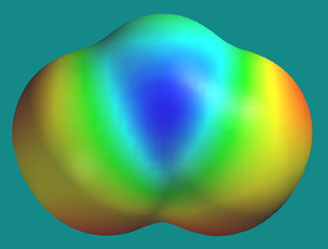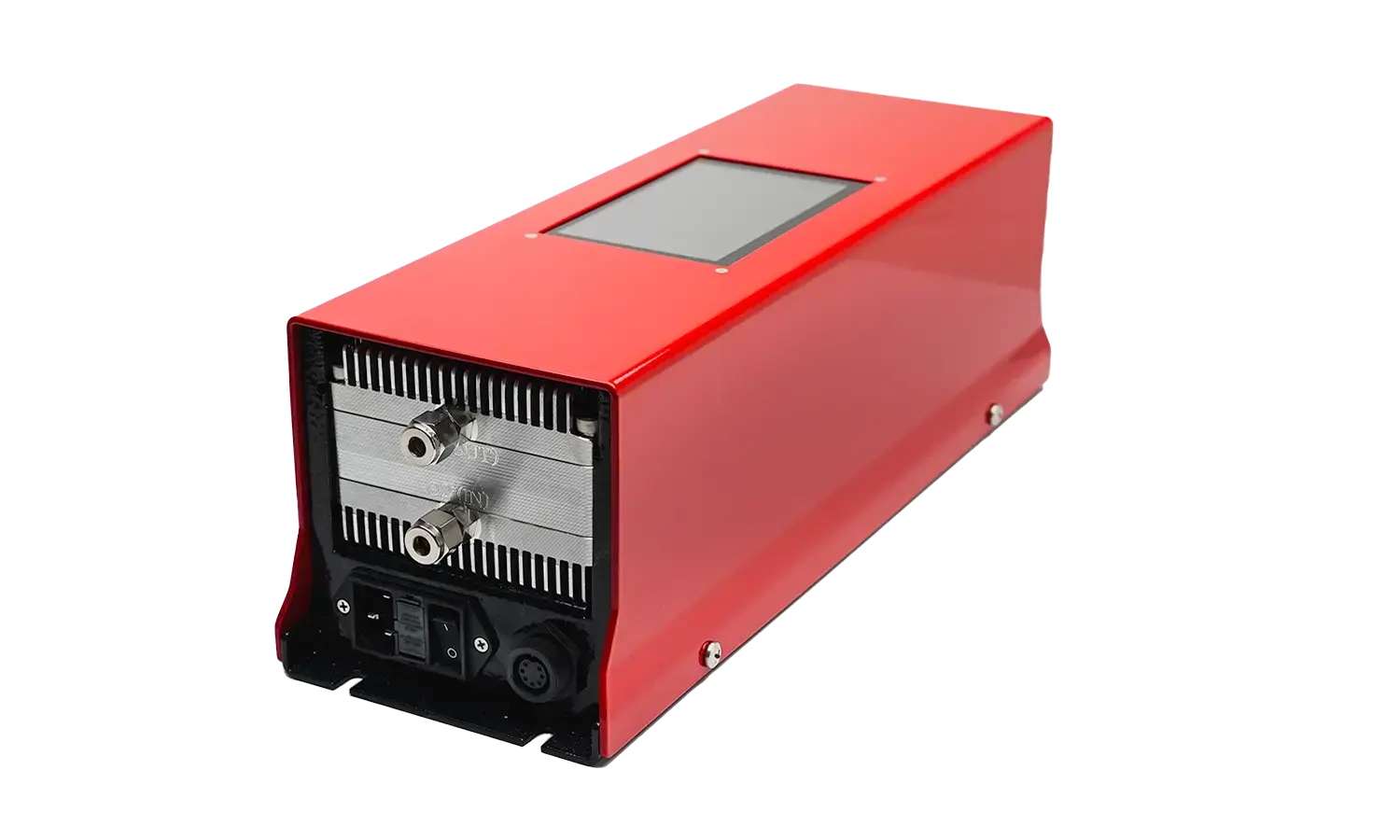Ozone Library
Introduction to Ozone
Ozone is one of the most abundant molecules in the Earth’s atmosphere. This is an introduction to ozone, where you can learn about its fundamental properties.
WHAT IS OZONE?
Ozone is a molecule that consists of three negatively charged oxygen atoms. The ozone molecule is unstable and has a short half-life, causing it to fall back into its original form.

An ozone molecule is nothing but an oxygen molecule that has received an extra oxygen atom. Ozone is naturally produced through certain types of chemical reactions. A well-known example is the ozone layer, created by the sun’s UV rays. Ozone is also formed during thunderstorms and waterfalls. In thunderstorms, ozone forms as a result of the high voltages that are involved. The specific fresh scent after a thunderstorm is caused by ozone formation.
When one speaks of ozone, the above-mentioned examples are immediately associated with it. It is, however, less known that ozone can be artificially produced so that it can be used for water treatment. Ozone generators can create ozone artificially by means of high voltages or by means of UV light. Both methods involve the decomposition of the oxygen molecule. This causes oxygen radical formation. These oxygen radicals can bind to oxygen molecules, forming ozone (O3).
INTRODUCTION TO OZONE: AN OXIDANT THAT BURNS CHEMICAL COMPOUNDS
Ozone is one of the strongest known oxidants. It can be used to burn dissolved compounds (oxidation). The extra oxygen radical in an ozone molecule quickly binds to each component that comes in contact with ozone molecules. This is because of the instability of ozone and its inclination to return to its original form (O2). Both organic and inorganic substances may be oxidized by ozone (oxidation) and microorganisms such as viruses, bacteria, and fungi (disinfection). This causes the extra oxygen radical to be released from the ozone molecule and to bind to other materials so that only pure and stable oxygen molecules (O2) are left.
As a result of the above-mentioned reaction mechanisms, ozone can be used for many purposes. Ozone is mainly applied in wastewater and drinking water purification (for disinfection). The application of ozone in the industrial branch is increasing. The food industry uses ozone for disinfection and the textile industry for color removal.
The most significant benefit of ozone is its pure characteristic. It only oxidizes substances, and as a result, byproduct formation rarely occurs.
Here are some of the most notable advantages of ozone:
- Water Purification: Ozone is a powerful oxidizing agent and disinfectant. It is commonly used in water treatment to eliminate bacteria, viruses, parasites, and other contaminants. Ozone can efficiently kill microorganisms and break down organic compounds, leaving no harmful residues.
- Air purification: In air purification applications, ozone can help eliminate odors, remove pollutants, and improve indoor air quality.
- Industrial Applications: Ozone finds numerous applications in various industries. It is used for wastewater treatment, odor control, and disinfection in food processing plants. Ozone can also be employed as a bleaching agent in the textile industry and as a sanitizer in healthcare settings. Its strong oxidizing properties effectively remove impurities and enhance overall cleanliness in industrial processes.
- Agriculture and Food Safety: Ozone has shown promise in agriculture by disinfecting and decontaminating irrigation water for hydroponics, vertical farming, and other methods. This can help prevent the spread of disease in crops. Ozone treatment can also extend the shelf life of fruits, vegetables, and other perishable food items by inhibiting microbial growth and reducing spoilage.
- Environmental Remediation: Ozone can be utilized for environmental remediation purposes. It can help break down harmful substances and pollutants in soil and water, contributing to the cleanup of contaminated sites. Ozone oxidation processes can effectively treat certain organic compounds, pesticides, and industrial waste, assisting in the restoration of ecosystems.
- Reduced Chemical Usage: Ozone’s powerful oxidizing properties can reduce chemical usage in various applications. For example, ozone can minimize the reliance on chlorine in swimming pools, reducing the formation of disinfection byproducts. This substitution can lead to a safer and more environmentally friendly approach to disinfection.
In conclusion, ozone is a versatile molecule with significant benefits in various domains. Its strong oxidizing and disinfecting properties make it valuable for water and air purification, industrial applications, agriculture, food safety, and environmental remediation. Ozone’s ability to oxidize substances without significant byproduct formation contributes to its appeal as a clean and efficient solution. However, it is important to handle ozone cautiously, as high concentrations can be harmful. With proper control and utilization, ozone can continue to offer valuable contributions to numerous fields, promoting a healthier and cleaner environment.





